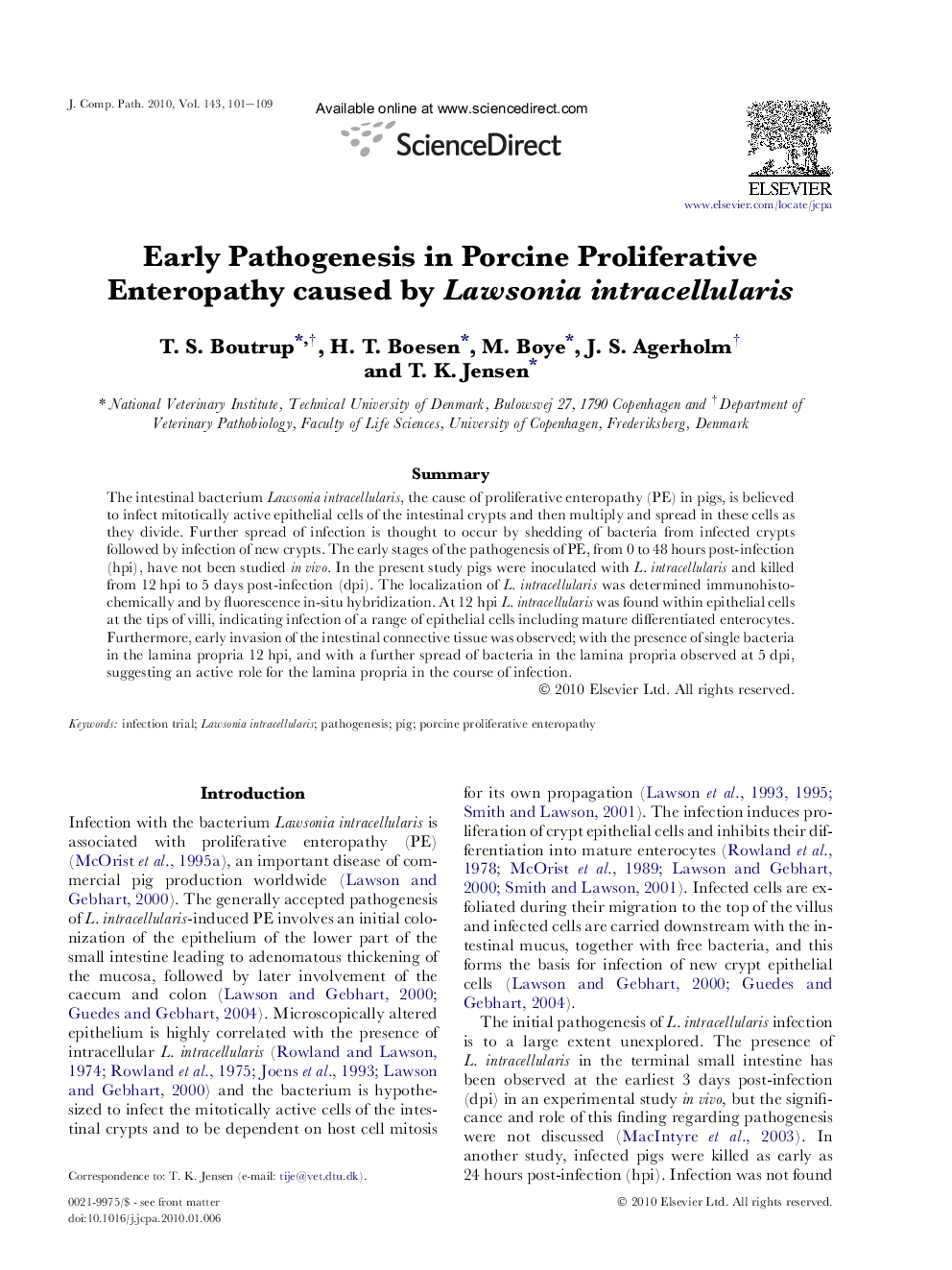| Article ID | Journal | Published Year | Pages | File Type |
|---|---|---|---|---|
| 2438336 | Journal of Comparative Pathology | 2010 | 9 Pages |
SummaryThe intestinal bacterium Lawsonia intracellularis, the cause of proliferative enteropathy (PE) in pigs, is believed to infect mitotically active epithelial cells of the intestinal crypts and then multiply and spread in these cells as they divide. Further spread of infection is thought to occur by shedding of bacteria from infected crypts followed by infection of new crypts. The early stages of the pathogenesis of PE, from 0 to 48 hours post-infection (hpi), have not been studied in vivo. In the present study pigs were inoculated with L. intracellularis and killed from 12 hpi to 5 days post-infection (dpi). The localization of L. intracellularis was determined immunohistochemically and by fluorescence in-situ hybridization. At 12 hpi L. intracellularis was found within epithelial cells at the tips of villi, indicating infection of a range of epithelial cells including mature differentiated enterocytes. Furthermore, early invasion of the intestinal connective tissue was observed; with the presence of single bacteria in the lamina propria 12 hpi, and with a further spread of bacteria in the lamina propria observed at 5 dpi, suggesting an active role for the lamina propria in the course of infection.
